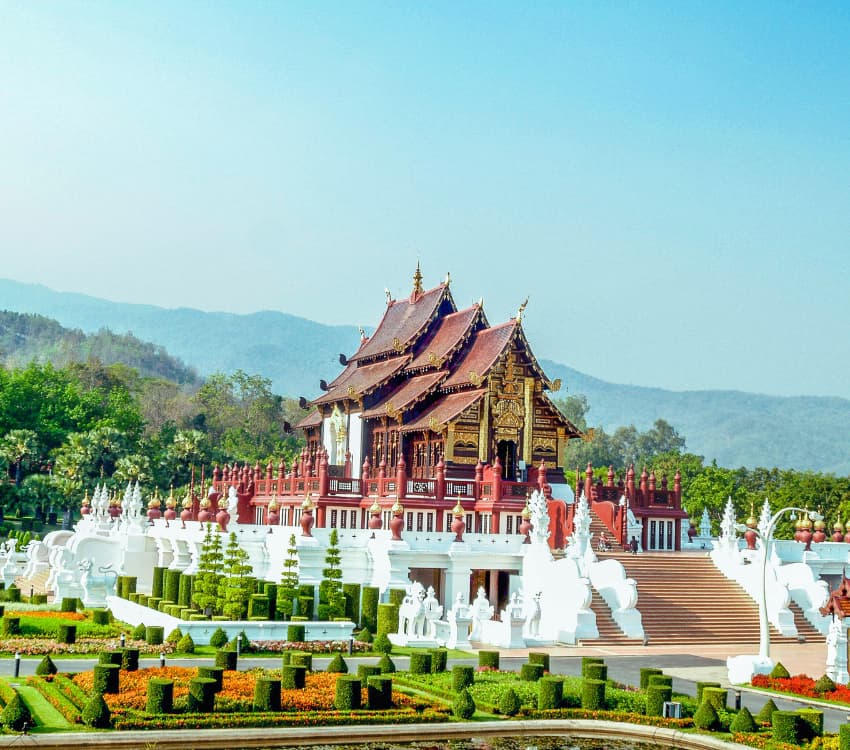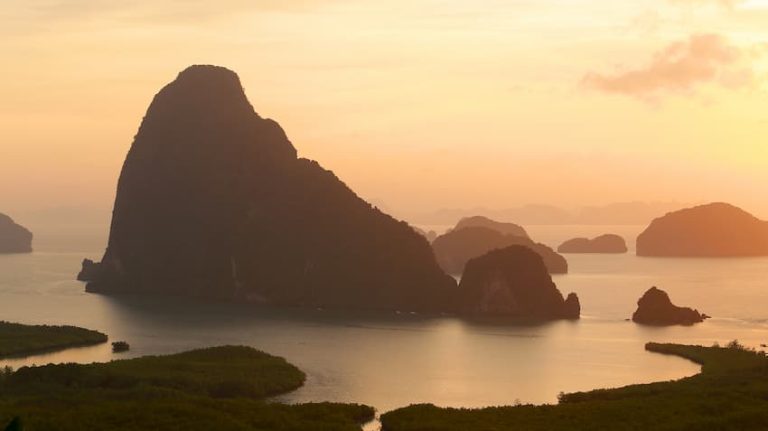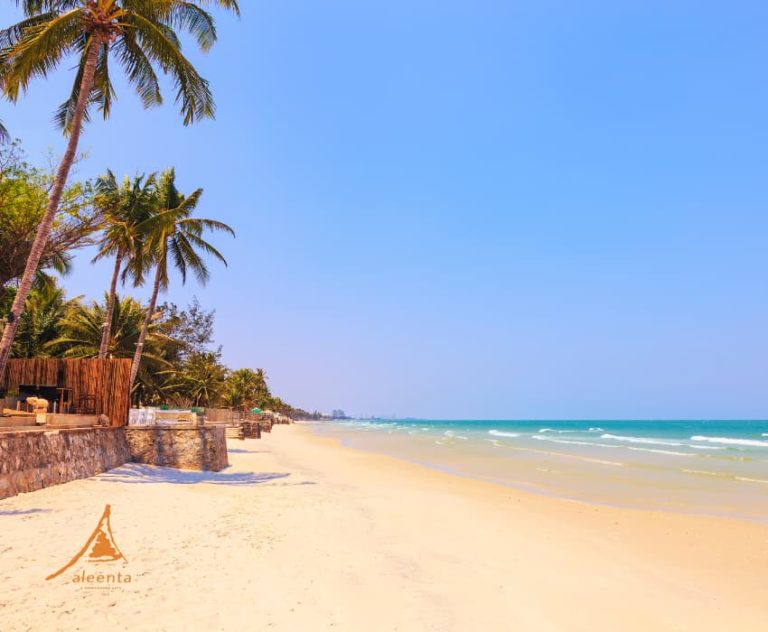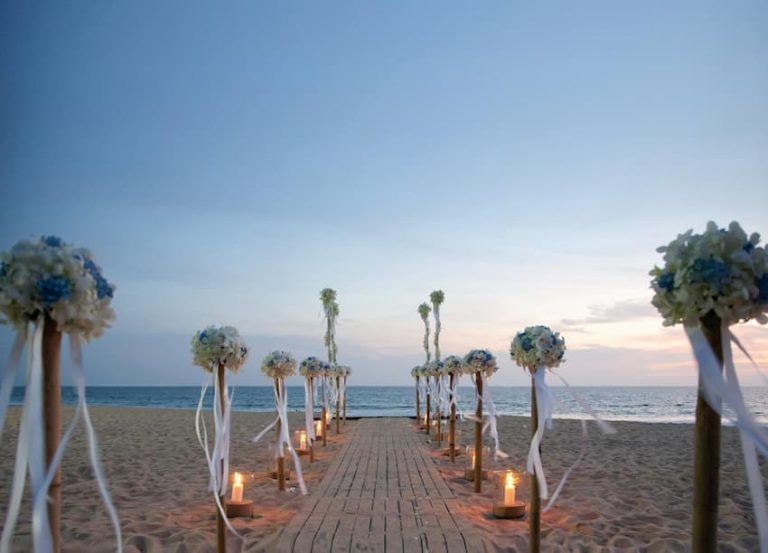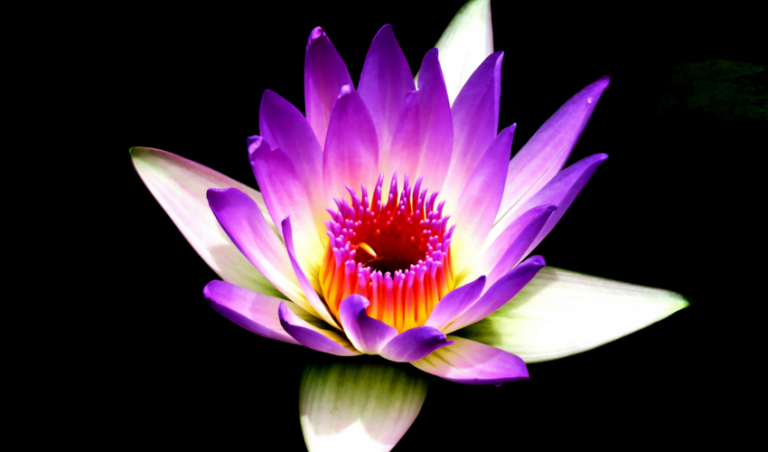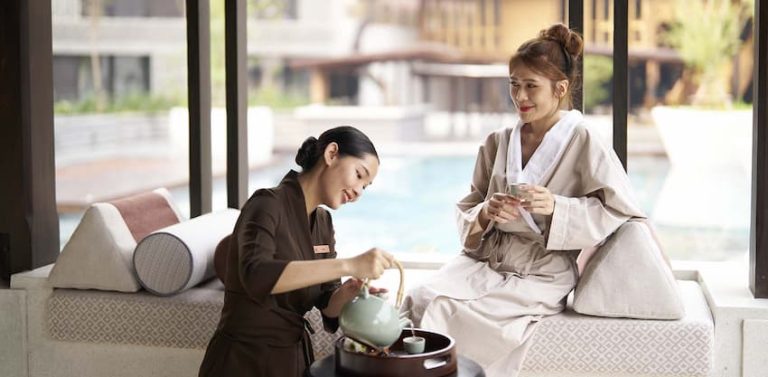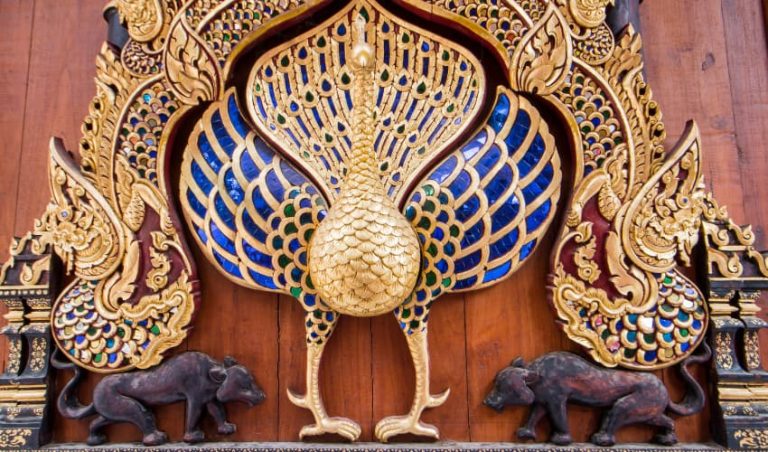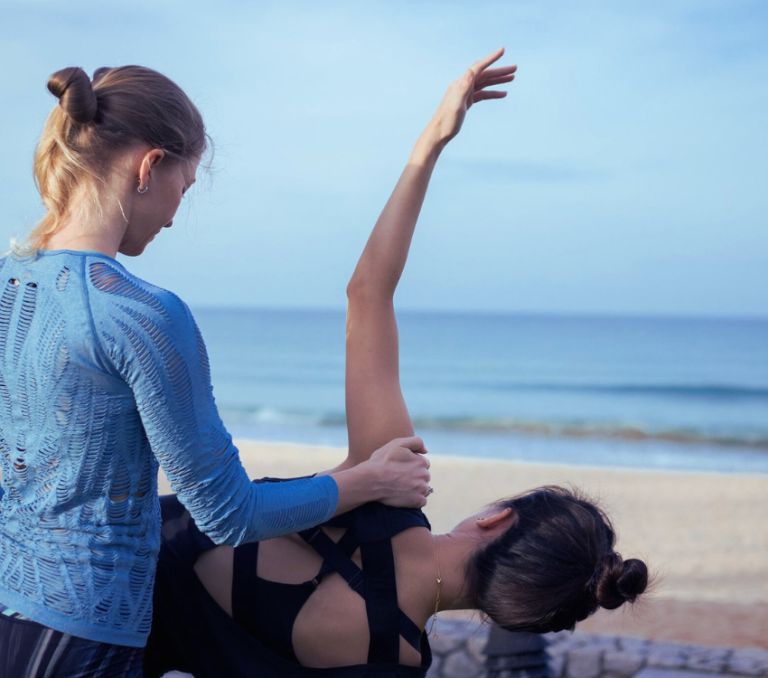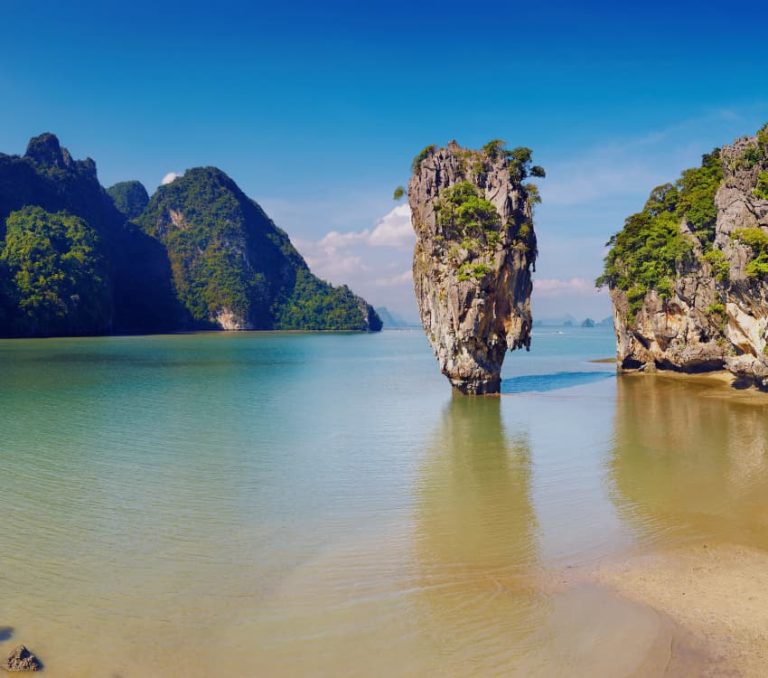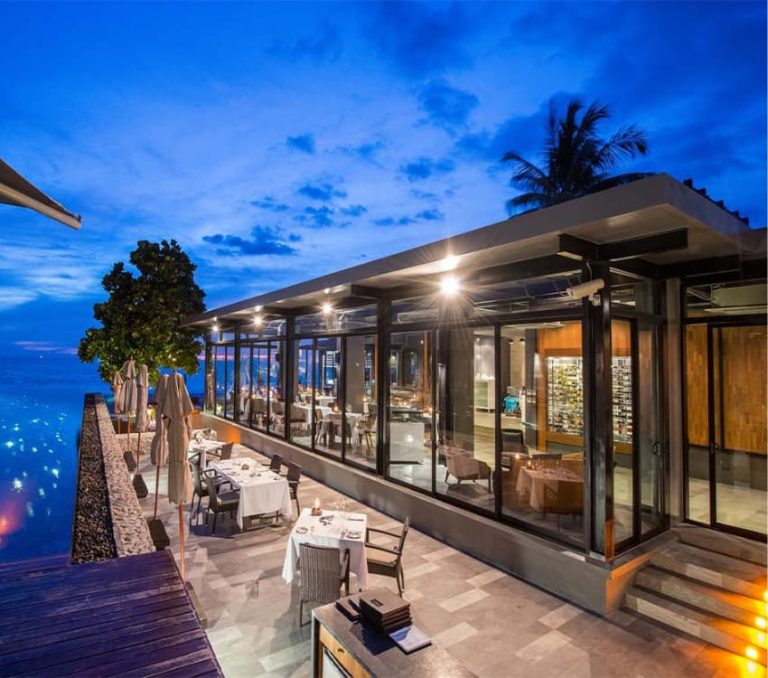Chiang Mai is a city where tradition meets modernity, offering a harmonious blend of ancient temples, vibrant street markets, lush mountains, and contemporary arts. Whether you are an adventure seeker, a culture enthusiast, or a wellness traveller, there is something for everyone in this beautiful Northern Thai city.
At Aleenta Retreat Chiang Mai, we pride ourselves on curating personalised experiences. Our concierge has compiled the best recommendations for your unforgettable visit. At the bottom of the recommendations, we include a map of all our Concierge’s recommendations.
Art Galleries
Gallery Seescape
Originally the brainchild of Thai artist Torlarp Larpjaroensoop in 2008, Gallery Seescape combines an art gallery, coffee shop, and small boutique into a unique space for locals and visitors to escape the busyness of Chiang Mai. It’s the perfect spot to indulge your artistic senses and enjoy expertly curated exhibitions by local and international artists.
Gongdee Gallery
Gongdee Gallery showcases local creative talent in an artistic, tranquil atmosphere. The founder, Vichit Chalwongse, is a local artist who creates innovative furniture designs, decorated wall panels, and mirrors. His unique style has become the hallmark of the Gongdee Gallery. Soak up some of the local atmosphere when you relax with refreshments on the garden terrace or browse the array of original artefacts, paintings, sculptures, and household items.
Sangdee Gallery and Café
Embracing art in all forms, the Sangdee Gallery is a popular place for residents and visitors to the area. It features art exhibitions, live performances, and even DJs and is a great place to meet and socialise with like-minded art lovers and creative types.
Woo Café, Art Gallery & Lifestyle Shop (*Recommended*)
Wander through the unique displays of contemporary or abstract art, and browse the home décor items before relaxing with a drink or a meal in the café. Woo Café, Art Gallery and Lifestyle Shop blend three relaxing activities in one stylish space in the popular Wat Ket neighbourhood of Chiang Mai.
Maiiam Contemporary Art Museum
Chiang Mai has long been famous for its skilled artisans and craftsmen. This heritage is to be proud of and celebrated, which is why the Bunnag-Beurdeley family founded the museum. An old warehouse was transformed into a contemporary space where they could share their private collection, which had taken thirty years to accumulate. Simple architecture and clever use of natural and reflected light showcase the artwork understatedly, allowing visitors to focus on the pieces rather than the surroundings.
To round off your time at MAIIAM, purchase a souvenir from the museum shop and enjoy a drink or a meal at the café.
Tita Gallery
Tita Gallery is located in Mae Rim, about 30 minutes from the centre of Chiang Mai. Set in lush surroundings, it’s a popular stop for visitors exploring the North of Chiang Mai or on the way to the Mae Sa Elephant Camp. The space houses an art gallery, a coffee shop and a craft shop that sells locally made souvenirs and genuine Thai products.
Thongma Studio
Thongma Studio in Mae Rim is just as much an art space as a haven for foodies. The owner, sculptor Chamnian Thongma, displays his sculptured busts throughout, and along with the French-inspired furnishings, he showcases his flair for art and interior design. Choose lunch in the surrounding tropical garden, or enjoy a coffee served by one of the friendly baristas. Either way, a visit to Thongma Studio is a treat.
Landmarks & Temples
Wat Phra That Doi Suthep
Wat Phra That Doi Suthep, perched on the regal Doi Suthep mountain, overlooks the city. This Buddhist temple is a sacred site to many Thai people and attracts many Thai and foreign visitors and Buddhist pilgrims who come to view the holy Buddhist relics.
The temple is about 15km from the hotel. Once at the car park at the temple’s base, you’ll have a few options to reach the pagoda. Those with energy to burn can climb the 309 steps or hike up the Monk’s Trail, and the less energetic can hop into a funicular railcar. From the temple pagoda, you’ll have a panoramic view of Chiang Mai and the surrounding countryside.
Wat Chedi Luang
This Buddhist temple is in the “old town” centre, ten minutes from the hotel. If you’re walking, it’s easy to find as the chedi or pagoda, is one of the tallest structures in the old city and the biggest chedi in Chiang Mai.
Construction of the initial 98-meter high chedi was completed in 1481, but sadly, the upper 30m collapsed during an earthquake in 1545. The chedi was restored in the early 1990s, embellished with statues of elephants around the base. The naga (water serpent) staircases on each side of the chedi were also restored, and it’s believed that these are the best manmade serpents in North Thailand. The structure’s height was never reinstated; it still stands over 50m high today.
Apart from enjoying the temple’s apparent historical value, tourists are invited to speak to the monks in monk chats that take place daily. It’s the perfect chance to learn anything about Buddhism or Thailand.
Wat Srisuphan (Silver Temple)
Wat Srisuphan is affectionately known as the Silver Temple because of the intricate silver embellishments on the exterior. Over the years, parts of the temple were repaired with silver, but work started in 2008 to completely cover the building in silver. The temple’s interior is an interesting blend of silver, mirrors, and bright colours. Following old Buddhist tradition, women aren’t allowed to enter the temple.
Wat Srisuphan once served as the main temple for a silversmith village. Some silver studios remain around the temple, where you can observe modern-day silversmiths or purchase their creations. Monk chats take place on Tuesdays, Thursdays, and Saturdays and are a great way to learn about Buddhism and meditation.
Wat Suan Dok (Flower Temple)
Adjacent to the principal pagoda, you’ll find the open-air assembly hall. This structure contains two Buddha images: one in a meditative position and the other standing behind it, facing in opposite directions.
The whitewashed mausoleums, which can be seen from the street, contain the ashes of the late rulers of Chiang Mai.
Wat Chiang Man
Wat Chiang Man is the oldest temple in Chiang Mai, dating back to the late 13th century. After construction, it served as the residence for King Mengai while the new city of Chiang Mai was being built. The larger two halls at the temple contain the oldest Buddha in Chiang Mai, a standing image holding an alms bowl. In the smaller hall, we find two further Buddha images. One is a small crystal Buddha called Phra Sae Tang Khamani, which is 10cm tall and believed to have healing powers. The other is a larger standing Buddha called Phra Sila. It is believed to bring rain for growing rice and is worshipped every April before the Songkran festival.
The gardens around the temple are peaceful and rarely busy. It’s a perfect place to relax and appreciate the history around you.
Wat Phra Singh (Gold Temple)
Wat Phra Singh is a few kilometres from the hotel, within the old city’s walls. This 14th-century Buddhist temple was built in the Lanna style and comprises three main buildings. The temple’s main feature is the assembly hall, Viharn Lai Kam. Inside the hall, you’ll find murals depicting what life was like hundreds of years ago. You’ll also see Phra Singh, the Lion Buddha. This Buddha image is carried through the main streets of Chiang Mai every year at Songkran (Thai New Year), and the locals honour it by sprinkling it with water.
The larger, less elaborate assembly hall, Viharn Luang, houses a 15th-century gold and copper Buddha. Also worth seeing is the library, Haw Trai, which contains various Buddhist scriptures. Renovations have been made to the buildings over the years, but a leisurely wander through the complex will still give you a good idea of the Lanna art and architecture.
Wat Umong
Wat Umong is located in a forested area at the foothills of the Suthep Mountains. Dating back to the 13th century, it is the only forest temple in Chiang Mai. It is famous for its meditation tunnels and a large, unpainted chedi (pagoda). The tunnels give the Wat its name, as Umong is the Thai word for tunnel. On the tunnel roof, you can see remnants of drawings of elephants and temples from the 13th and 14th centuries.
The temple complex houses a working monastery. Monks regularly wander around the complex in prayer, although they rarely use the tunnels for meditation these days due to the large number of visitors.
The grounds are calming and peaceful, with a lake inhabited by catfish and turtles. The turtles aren’t seen frequently, and you’re considered lucky if you spot one.
Attractions
Chiang Mai Night Safari
The Chiang Mai Night Safari is modelled after the night safari in Singapore. Guests will experience the thrill of being outside at night, among wildlife. There are three zones – Savanna Safari, Predator Prowl and the Jaguar Trail – all set around the lake. The Jaguar Trail is a walking trail that is also open during the day, and you can explore this at your leisure. Both the Savanna Safari and Predator Prowl are undertaken in open-sided safari trams. You’ll have sightings of giraffes, zebras, elephants, hyenas, lion and numerous other predators and their prey.
The Chiang Mai Night Safari features a kid’s zone, a musical fountain, a Tiger World, and a Digital Zoo.
Queen Sirikit Botanic Garden
Queen Sirikit Botanical Garden opened in 1992. It was established in honour of Queen Sirikit, the Queen Mother of Thailand. Located in the foothills of the Doi Suthep-Pui Mountains north of Chiang Mai, it’s the first botanical garden in Thailand to meet international standards.
The botanical garden has a lot to see, and you can easily spend a whole day wandering through the different areas. There are several trails, ranging from the shorter Waterfall Trail, which takes about 45 minutes, to the longer uphill Climber Trail, which can take up to two hours to explore. Visitors can wander through the Fern Garden with its luscious array of shade plants and ferns, the Banana Avenue that showcases over 200 varieties of bananas or the white flower collection with over 200 varieties of white flowering plants.
The Glasshouse Complex, which opened in 2002, is a highlight of the garden. It comprises eight glasshouses with themed plant collections and four exhibition conservatories. The glasshouses include Tropical Rainforest House, Arid House, and Limestone House, among others. Most visitors prefer to travel by vehicle to this area, about an hour’s walk uphill from the entrance. You can take your own motorcycle or car into the garden or use the shuttle bus that stops at each section.
Highland People Discovery Museum (Formerly the Tribal Museum)
The Highland People Discovery Museum is about a twenty-minute drive from the hotel, adjacent to the King Rama IX Lanna Garden. The museum showcases the history and indigenous culture of nine hill tribes of Northern Thailand, including the Hmong, Mien, and Akha. Visitors can watch a short video on arrival and then wander through the museum at their leisure before browsing the authentic, handmade items in the gift shop.
Chiang Mai Zoo
Located a short drive from the hotel in the foothills of the Doi Suthep Mountains is the Chiang Mai Zoo, the first zoo in Northern Thailand. Spread over 200 acres of land, the zoo is home to over 400 animal species, including elephants and tigers. The Zoo features attractions like the African Zone, with ostrich, giraffe and zebra; the Nakornping Bird Park, with over 1,500 birds; two pandas who are on loan from China; and Chiang Mai Aquarium, with its underwater tunnel providing unique views of the sea life.
Exploring the zoo on foot is best, but shuttle buses stop at each attraction. The admission fee doesn’t allow access to all areas, and additional fees apply for specific areas and the shuttle bus.
Hiking & Trekking
Doi Inthanon National Park
Doi Inthanon National Park, also known as “The Rook of Thailand,” is a must-see for nature lovers. The park lies about 70km southwest of Chiang Mai city centre and is one of Thailand’s most popular national parks. It spans more than 450 square kilometres and is famous for its mountainous terrain, remote villages, fast-flowing rivers, and waterfalls, all surrounded by lush tropical forests and abundant birdlife.
The majestic Doi Inthanon, the highest mountain peak in the country, rises to a height of over 2,5km above sea level. The summit is one of the most popular areas in the park, with sweeping views across the landscape. It’s also a great spot to watch the sunrise.
If you visit in late January or early February, you’ll be able to catch the beautiful Siamese sakura flowers in bloom, covering the trees in pink. The park is a natural habitat for wildlife like bats, deer, monkeys, and over 50 species of reptiles.
While the park maintains the area’s natural beauty, it has adjusted to the influx of tourists. It offers a few cafes, restaurants, and walkways, making moving to areas of rough terrain easier.
Mae Taeng Valley
The Mae Taeng District is an area just north of Chiang Mai that has become a hiking hotspot. Several hiking trails wind through the hills and mountains, with rich natural beauty on all sides. Explore caves and waterfalls or wander through lush farmland and rice paddies. You even have the chance to visit the Shan people, a remote tribal group, and Lahu Village, the home of another hill tribe, set in the mountains.
Whitewater Rafting
Mae Taeng Valley
Just 90 minutes northwest of downtown Chiang Mai, you’ll reach the Mae Taeng Valley. This beautiful, rugged area lies between Chiang Dao Wildlife Sanctuary to the north and the Huai Nam Dang National Park to the west.
Many ethnic hill tribes reside in this area, with large populations of domestic elephants and other wildlife. Rafting down the Mae Taeng River will give you a decent dose of adrenaline while allowing you to view the lush jungle landscape and wildlife. You may even catch site of one of the hill tribes or spot an elephant bathing in the river!
Choose from either the 8km trip suitable for families or the extended; more rapid-filled 10km trip. Either way, you’ll have a not-to-be-forgotten experience.
Mae-Wang River, Sanpatong District
Escape the tourists in Chiang Mai and experience part of the local life in Northern Thailand. You’ll be collected from your hotel in the morning for a scenic trek through the jungle on the outskirts of the Inthanon National Park.
While trekking, you’ll pass a waterfall and have lunch jungle-style, after which you’ll arrive at a Karen hill tribe village. Bamboo rafting on the Mae-Wang River is prevalent in this area, and you’ll be able to view the local riverside activities at leisure as you float down the river. After a fun-filled day, you’ll return to your hotel to relax and enjoy the evening.
Markets
Warorot Market
This local market is one of the largest in northern Thailand. It is popular with locals and tourists and offers many ready-to-eat meals, local snacks, and fresh produce. Stalls sell inexpensive clothing and fashion accessories. If you want to taste local Thai life, the warorot market is one to visit.
Ton Payom Market
This local market has an incredible array of fresh produce, fresh meat, chilli paste, and other ingredients to create a traditional Thai meal. You can also buy ready-cooked meals, such as curries, noodle dishes, fried rice, and other popular street food dishes. If you’re feeling adventurous, try an authentic Thai snack like barbecued frogs or deep-fried pigskin.
Sompet Market
Sompet Market is an open-air market in the Old City area of Chiang Mai, close to the Thapae Gate. The location is easily accessible for tourists who enjoy this food market’s local atmosphere. It’s a particularly popular market for fresh fruit and other fresh produce. You can also buy ready-cooked meals here, some snacks to nibble on, or a fresh smoothie, which might be for the more health-conscious.
The market can get crowded in the morning and early afternoon, as it’s popular for cooking class teachers. They bring their students here to purchase the ingredients they need for that day’s dish.
Muang Mai Wholesale Market
This is one of the markets for fresh produce, and many farmers from the north of Thailand sell their goods here at wholesale prices. It’s a great place to pick up exotic Thai fruits, like durian and mangosteen. You may also find several stalls selling clothing and other items. The market is outside the Old City, close to the Ping River.
Elephant Interactions
Patara Elephant Farm
Patara Elephant Farm allows visitors to interact with these majestic animals, learn about them, and understand their way of life. The farm offers three personalised packages, all providing valuable insight and unique experiences.
Take the chance to be an Elephant Caregiver for a Day with this in-depth package from Patara Elephant Farm. You’ll be involved in all aspects of caring for elephants, as their caregivers are daily. This includes being trained to approach an elephant, conducting a health inspection, walking and feeding your elephant, and bathing and brushing it in the river. After that, you’ll be shown how to ride the elephant, bare-back and high up on its neck, and communicate with it.
The other packages—Baby Elephant for a Day and Elephant Day Care—are less in-depth and don’t allow for elephant riding, but they still provide interesting insight into the care of these gentle giants.
Guests are collected from the hotel and dropped back at the hotel after the tour.
Maesa Elephant Camp & The Chang
The Maesa Elephant Camp was founded in 1976 with six elephants on loan from the Karen hill tribe. Various activities like elephant riding and shows were introduced as there was a push for tourism development in the area. The camp has grown substantially in the last 40 years, and many operational changes have occurred. The camp promotes a natural environment for the elephants, one where these pachyderms are free from chains, and there is no riding or shows for tourists. As of March 2020, elephant-riding at Maesa ended for good.
The Chang is the rest and rehabilitation centre at Maesa Elephant Camp. Here, visitors can prepare food for and feed the elephants and walk with them to bathe in the stream or the mud bath. Full-day and half-day packages are available and provide a wonderful opportunity to learn about the largest land mammals in the world.
Packages include collection from and drop-off at the hotel, refreshments with the half-day package, and lunch with the full-day package.
Thai Elephant Conservation Centre
The Thai Elephant Conservation Centre is an educational centre offering different activities for tourists and locals. Some are designed to showcase the strength and intelligence of the elephants, while others provide the opportunity to interact with them. You can observe the elephants bathing, which they do twice a day, or you can have a traditional elephant walk while seated on the mammal in a wooden-framed howdah.
The conservation centre also showcases a Mahout’s role in caring for the elephant. You can learn to bathe an elephant, walk, and ride the elephant, as the mammals’ carers do daily. You can even learn about becoming a mahout by completing a one-day programme.
While at the centre, don’t miss out on a visit to the elephant hospital, where the elderly and ill elephants are well cared for. The Thai Elephant Conservation Centre is about 80 kilometres south-east of Chiang Mai.
Golf
Thailand has approximately 250 golf courses, which are a major tourist attraction. The lush landscape in the Chiang Mai area makes for some of the country’s best courses.
Alpine Golf Resort Chiang Mai
The Alpine Golf Resort boasts three international championship golf courses and 27 holes designed by award-winning course designer Ron M Garl. The challenging courses offer a balanced combination of easy and difficult holes. The golf resort is located about 45 minutes from the Akyra Manor Hotel.
Once off the course, you can have a meal in one of the two restaurants at the resort or enjoy a cocktail and snack after cooling off in the pool. For extra relaxation, two spa pavilions poolside, each with a Jacuzzi, steam bath, and treatment area.
Chiang Mai Highlands Golf & Spa Resort
Chiang Mai Highlands opened in 2005 and became an award-winning course almost immediately. Asian Golf Monthly named it one of Asia’s Top Three New Courses. In the following years, it garnered further awards, including Best Value for Money Experience Golf Course in Asia and reaching the Top 10 of the best courses in Thailand.
This 27-hole Championship course is laid along the mountain and valley, affording the players spectacular views from every hole. In addition, the resort offers a 300-yard practice range, putting greens, a swimming pool, a spa, and fitness facilities. The open-air restaurant provides excellent views over the course.
Chiang Mai Inthanon Golf and Natural Resort
Chiang Mai Golf Resort was initially designed as a 9-hole course in 1940. However, it was later redesigned due to a lack of trees and too much exposure to the wind. It reopened in 1990 as a 27-hole course spread over 25 hectares of flat terrain. There’s a decent mix of holes, including some that will challenge even the best golfer.
A clubhouse was built in 1963 and is strategically placed to provide exceptional views across the course. There’s a practice area for your short game, and you can book lessons with one of the five pros at the club. Tennis facilities are also available for those wanting a break from golf.
Summit Green Valley Chiang Mai Country Club
This is the second golf course in the Summit Group, the first being the Summit Windmill Golf Residence in Bangkok. This world-class course is framed by mountains, with plenty of lush trees, lakes, and ponds providing an incredibly scenic landscape. The course has 18 holes and is relatively tough, with elevation changes, wind, and bunkers adding challenges to almost every hole.
The clubhouse has three floors and includes a pro shop, locker facilities, and the Thai Lanna Restaurant. The restaurant offers Thai and Asian cuisine and stunning views over the golf course and gardens.
Maejo Golf Club
This 18-hole, par 72 golf course was designed to blend into the surrounding natural terrain. It features elevated tee boxes that give players superb views across the course, and the greens are considered some of the most challenging in Northern Thailand. A few fairways are lined with fruit trees bearing lychees, tangerines, and pomelos—great for a quick, refreshing snack! The course is suitable for all levels of players, with different boxes for low and high handicappers.
Maejo Golf Club is about 30 minutes from the hotel and is easy to find close to Maejo University. The restaurant in the Lanna-style clubhouse has a terrace overlooking the course and provides beautiful views of the mountain sunset. The pro shop is well-stocked with clothing and equipment if you need anything on arrival.
Shopping
Nimmanhaeminda Road
Chiang Mai is well known for its array of handcrafted items, and you’ll find plenty to fill those empty gaps in your luggage on Nimmanhaeminda Road. Browse the little boutiques, window shop at the more upmarket shops or wander leisurely through one of the shopping malls. It’s a pleasant area to shop, and you’re sure to come across many unique shops with quaint gifts to take home to your friends.
When your legs and wallet need a break, visit one of the many restaurants or cafes for a coffee, cocktail, or bite to replenish your energy.
Sunday Walking Street (Cultural Street)
As the name suggests, this market is only open on Sundays, but if you’re in Chiang Mai over a weekend, it’s a must-visit place. It extends about one kilometre down Ratchadamnoen Road from the ThaPhae Gate. The stretch of road is closed to traffic while the market is open, allowing shoppers much more freedom to wander through the stalls looking for hidden treasures.
It’s popular with both locals and tourists, all shopping for bargains. Many handcrafted items are for sale here, including shoes, souvenirs, clothing and silk products. The atmosphere picks up after sunset, and you’ll find musicians, street performers and dancers out in force.
Open Sundays only, from 16h00 – 00h00
Wua Lai Silver Street (Saturday Market)
This market is open only on Saturdays and is opposite the Chiang Mai Gate on Wua Lai Road. Like the Sunday Walking Street, the road is closed to traffic for the duration of the market. Many silversmith shops sell handcrafted silver items like jewellery and sculptures. Other stalls selling wood carvings, candles, and ornaments are great places to pick up some real bargains for family and friends at home.
There are no fixed restaurants at Wua Lai Silver Street, but now is the time to try some delicious Thai street food if you haven’t already. The market comes alive after dark, with stalls up and street performers creating a fantastic, friendly atmosphere.
Open Saturday only, from 16h00 – 00h00
Ban Tawai Wood Carving Village
Ban Tawai is an ancient village over 100 years old, located 20 minutes south of the hotel. It’s the home of the wood carving industry in Chiang Mai. It’s considered one of the most significant cultural attractions in Chiang Mai Province for tourists and is well known to foreigners and locals. Here, you’ll find superbly crafted wood carvings, wicker products and pottery, among many other handiworks. Wood products are abundant at Ban Tawai, all excellent quality and often at bargain prices.
One of the village attractions is the demonstration of the various crafting processes. You can see how wooden products are manufactured, a lacquerware demonstration, and you may even catch a carpentry competition. There are plenty of little coffee shops where you can relax and admire your purchases.
Sankampaeng and Umbrella Making Village
Sankampang Road is another area around Chiang Mai where you can watch craftsmen at work. The shops, showrooms, and factories that line the road are excellent places to buy handcrafted items and souvenirs.
One of the highlights of Sankampaeng is a visit to the umbrella-making village, Bo Sang. This village is famous for the beautiful umbrellas originally made with Saa paper from the bark of mulberry trees. In years gone by, elders in the village would make them after the annual rice crop to make extra money. These days, they are made with Saa paper and silk and have intricate designs hand-painted on the umbrella canopy.
One Nimman and Maya Lifestyle Shopping Centre
If something hip and trendy appeals to you more than markets and craft villages, a visit to either Nimman or the Maya Lifestyle Shopping Centre should scratch that itch. One Nimman offers upmarket clothing and gifts, art and souvenirs. Cafes and an open-air food hall are great places to relax and indulge in some people-watching.
The Maya Lifestyle Shopping Centre is a large, modern shopping mall housing a variety of international brand shops as well as some local brands. An entire floor dedicated to fast food outlets, cafes, and restaurants should cover all culinary tastes. To see Chiang Mai from a different perspective, visit the rooftop bar to glimpse a proper Thai sunset.
Central Plaza Chiang Mai Airport
Within walking distance of the Chiang Mai Airport is the Central Plaza Mall, a great place to pick up last-minute gifts and souvenirs. The mall has a variety of shops selling local and international brands and is spread over three floors. A seven-screen cinema offers both Thai movies and international films with subtitles. The Relaxation Spa and Massage on the top floor is where you can get your traditional Thai massages, oil massages and reflexology before visiting the food court for some Thai food at excellent value.
Zipline
Flight of the Gibbon
Flight of the Gibbon was established in 2007 and has grown to be the largest zipline in Asia. It combines ziplines and rope bridges that take you on a tour through the exotic Thai rainforest. You are also taken on an educational walk through the rainforest, where you’ll learn all about the different flora and fauna in this region.
The experience takes around seven hours with transport and includes two to three hours of ziplining. You are given a full safety briefing and safety gear before setting off. After lunch, you can hike to the Mae Kampong Waterfall or relax and reflect on your experience before returning to Chiang Mai and your hotel.
Eagle Track Zipline
Eagle Track is Tumbol Maeram in the Mae Rim District, about an hour from Chiang Mai. It lies between three hill tribe villages, and the surrounding area is lush with paddy fields and the Maeram River.
There are three zipline packages to choose from. The longest is the Gold Package, which has 16 zip lines, three abseils, numerous bridges, ladders, beams, and other obstacles to cross. The Silver Package has nine ziplines, two abseils, and various obstacles, and the Bronze Package has six ziplines and one abseil, with the obligatory assortment of additional obstacles.
The experienced team at Eagle Track provides all the relevant safety information and equipment and will ensure you have the time of your life.
Jungle Flight
Jungle Flight has been operating since 2009 and is located in the rainforest on one of Thailand’s highest mountains. The zipline lets you experience the area’s natural beauty while flying through the tree canopy on a series of cables. Jungle Flight also boasts the longest single zipline in Thailand at 1000m!
Three packages are available, each longer than the previous one, with more bridges, ladders, and zip lines.
The trip takes about six hours, including collection and drop-off at the hotel.
Concierge Map
Aleenta Retreat Chiang Mai
For a truly immersive Chiang Mai experience, Aleenta Retreat Chiang Mai provides an intimate and luxurious escape amidst the natural beauty of Northern Thailand. Our boutique retreat blends contemporary comfort with traditional Thai design, offering a sanctuary of peace and relaxation.
Indulge in holistic wellness treatments at our award-winning spa, dine on farm-to-table cuisine inspired by local flavours, and unwind in serene surroundings that embrace the essence of Lanna culture. Whether you seek adventure, relaxation, or cultural discovery, our personalised concierge services ensure your stay is extraordinary.
Let Aleenta Retreat Chiang Mai be your gateway to the soul of Chiang Mai. Your journey begins with us.
Related Articles
- Six Sightseeing Ideas in Chiang Mai
- Nightlife in Chiang Mai
- Free & Cheap Things to Do In Chiang Mai
- Walking Tour Of Chiang Mai
- Inside Chiang Mai’s Ancient City Walls
Aleenta Retreat
Chiang Mai
Chiang Mai
189 Soi Ban Mai Lang Mo 18,
Suthep, Muang Chiang Mai District,
Chiang Mai 50200
T: +66 (0)52 090 333

